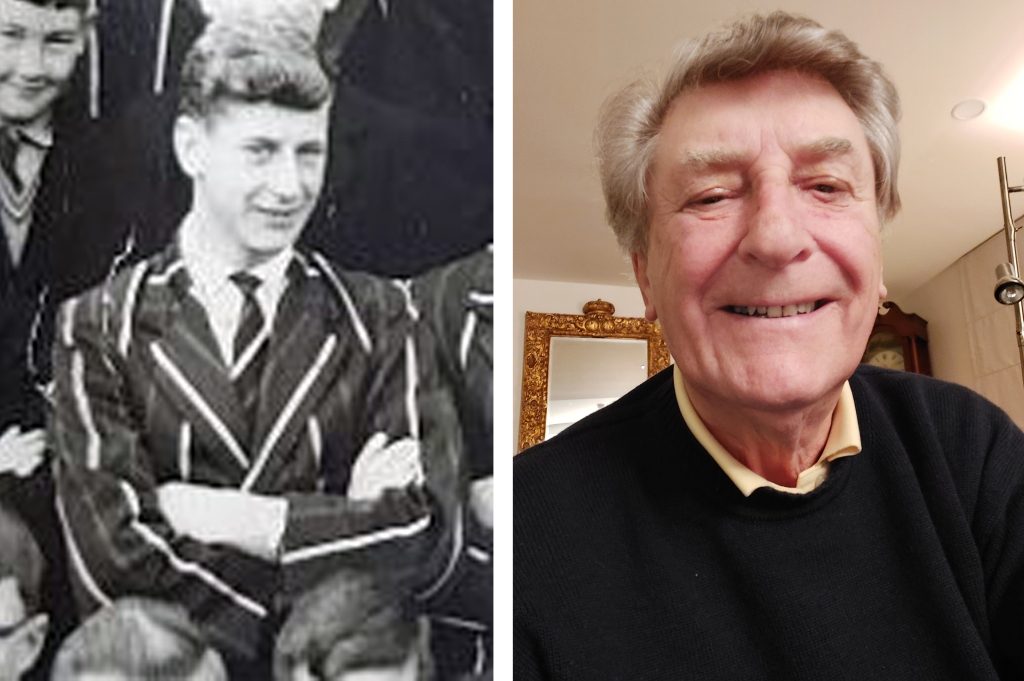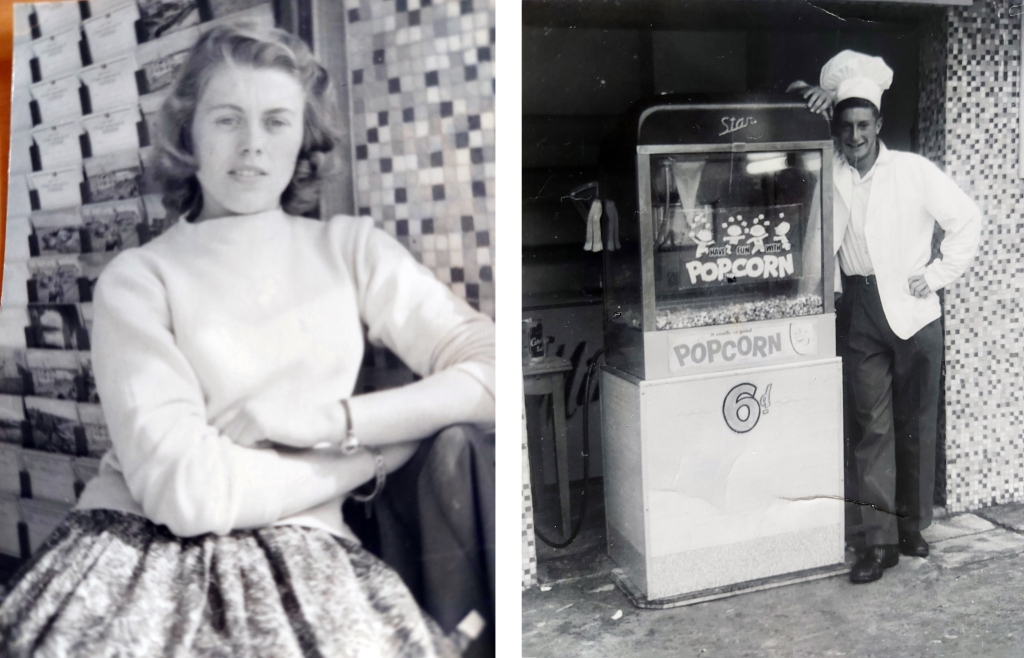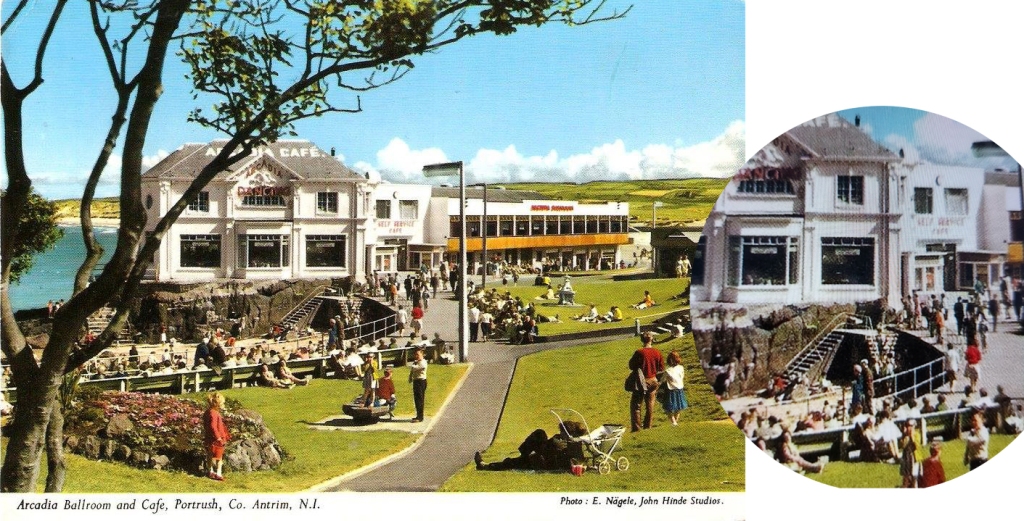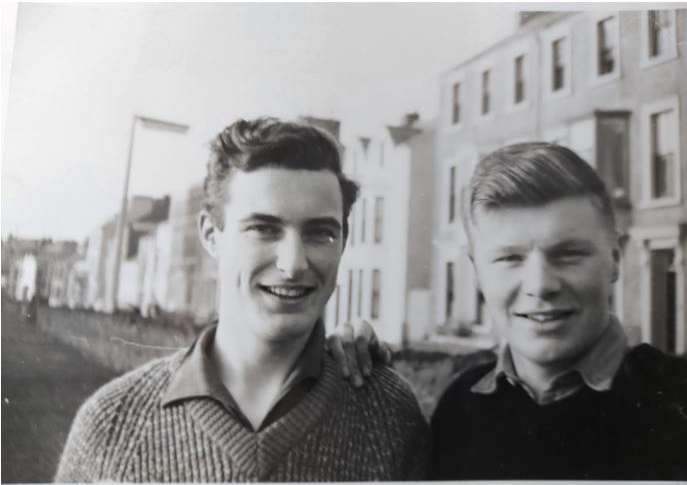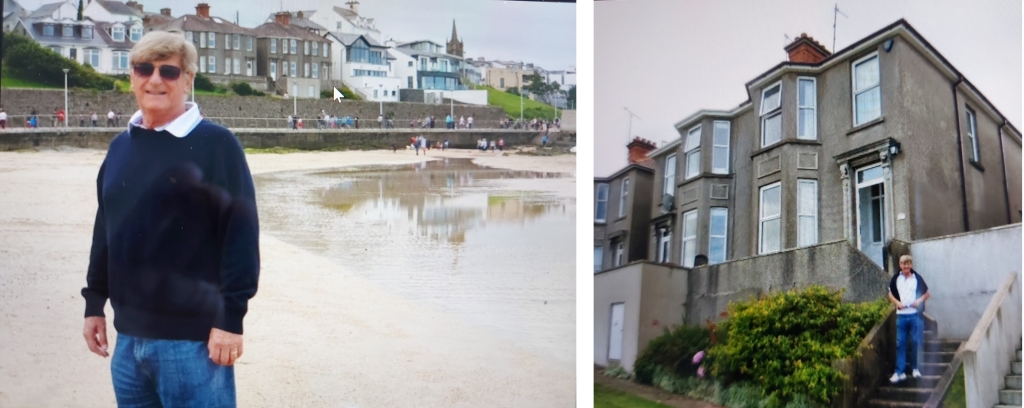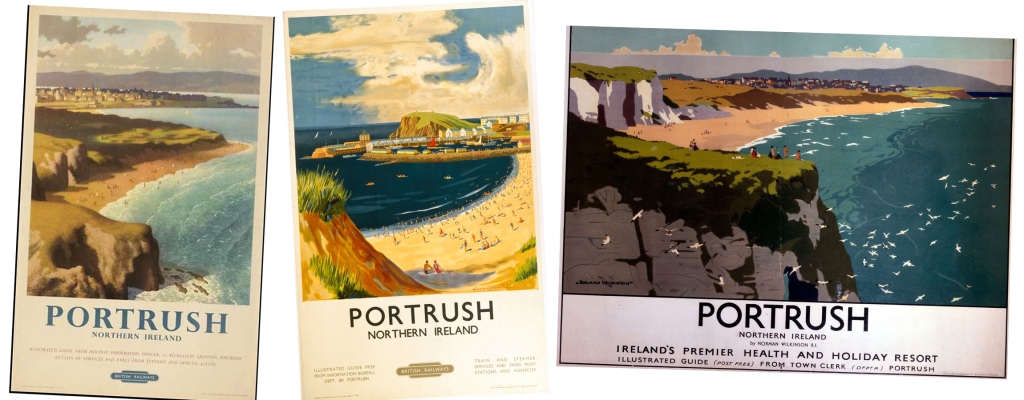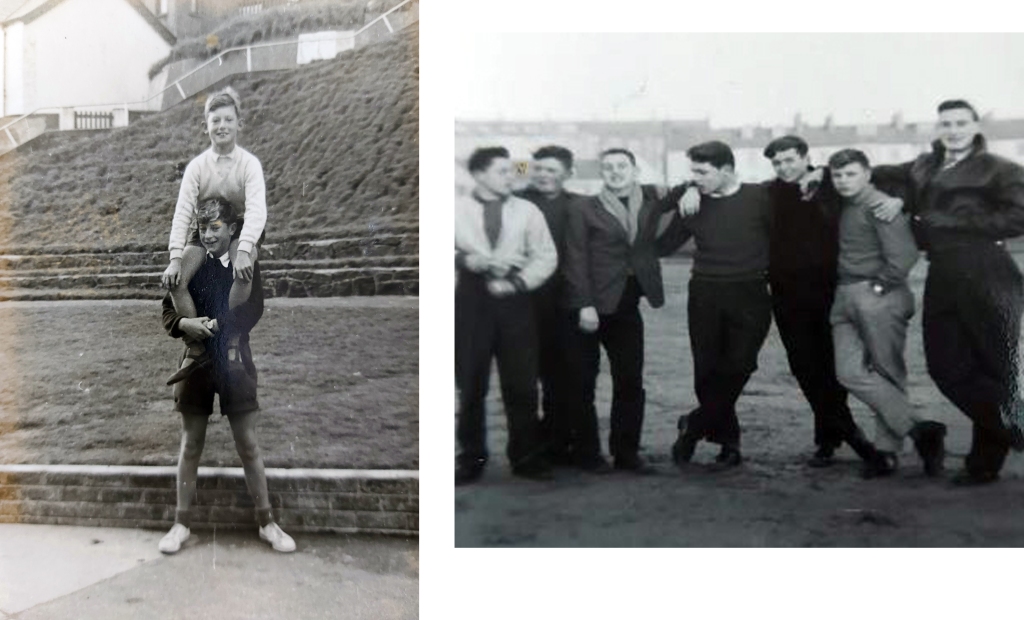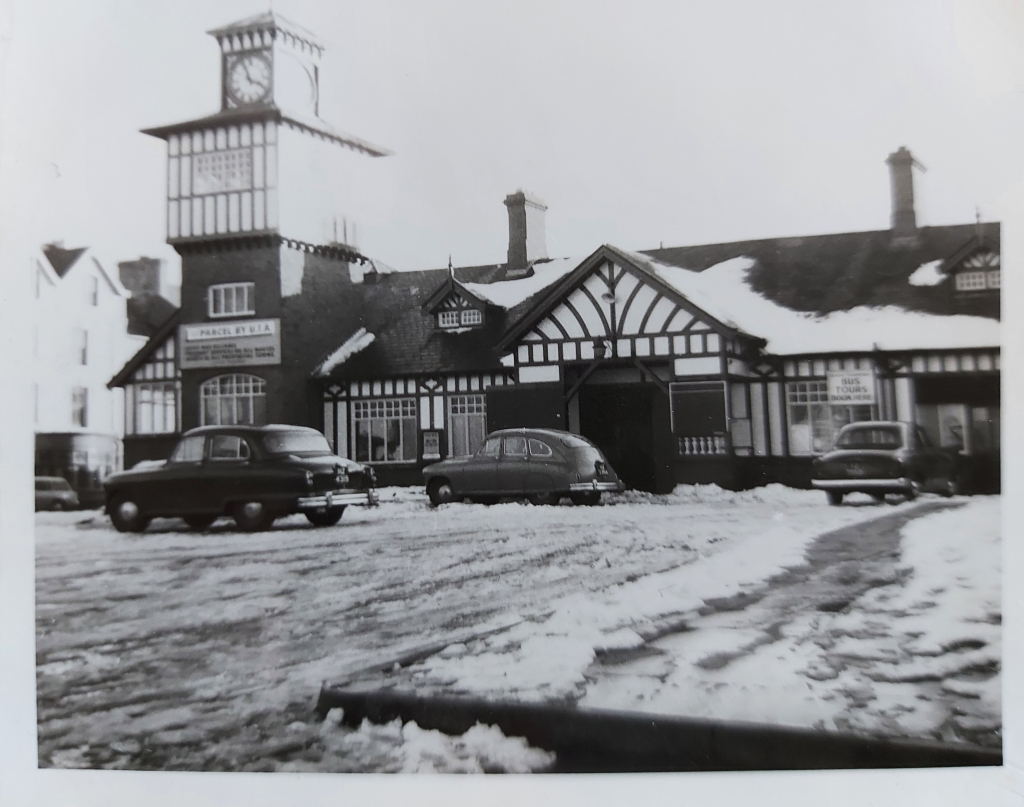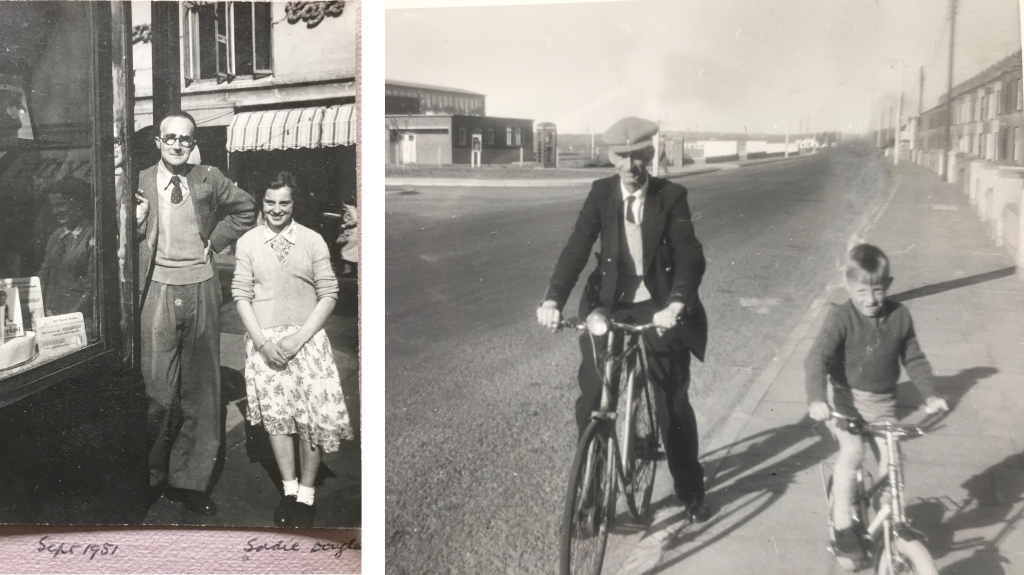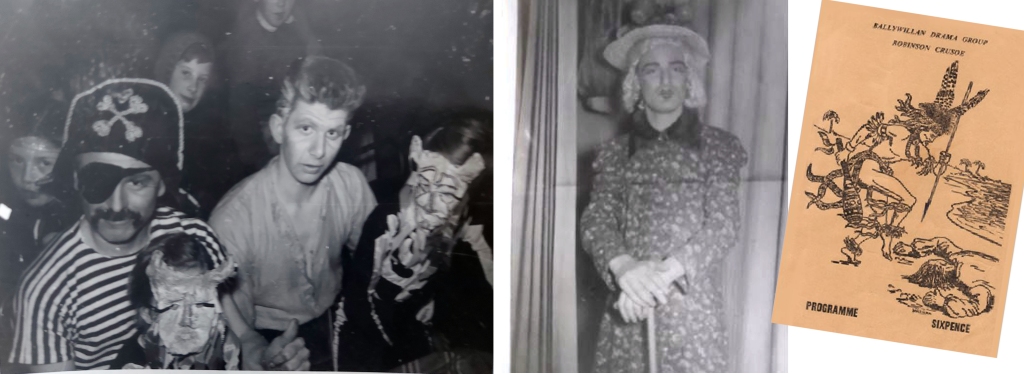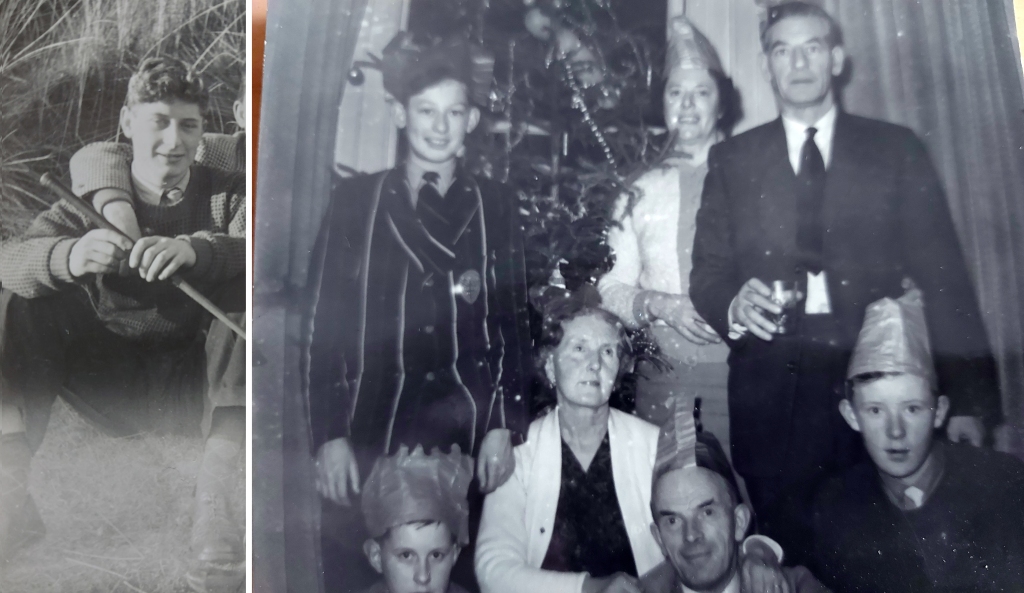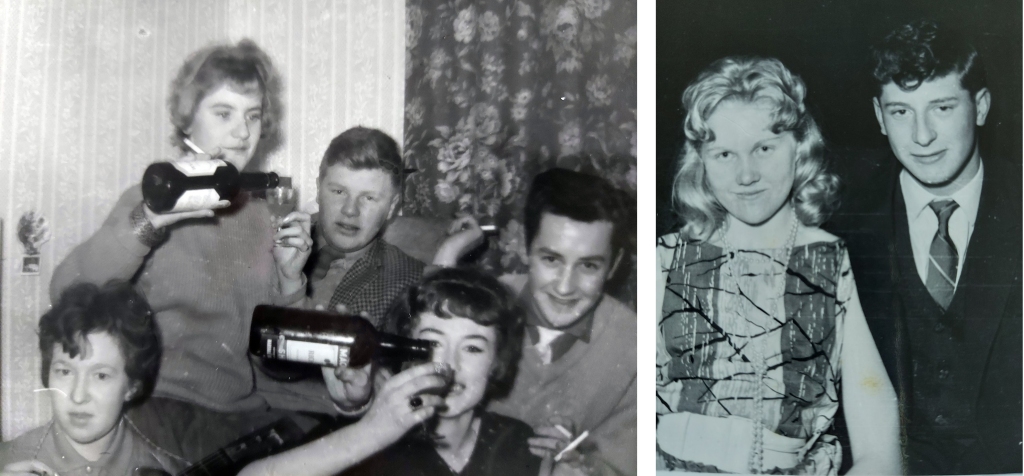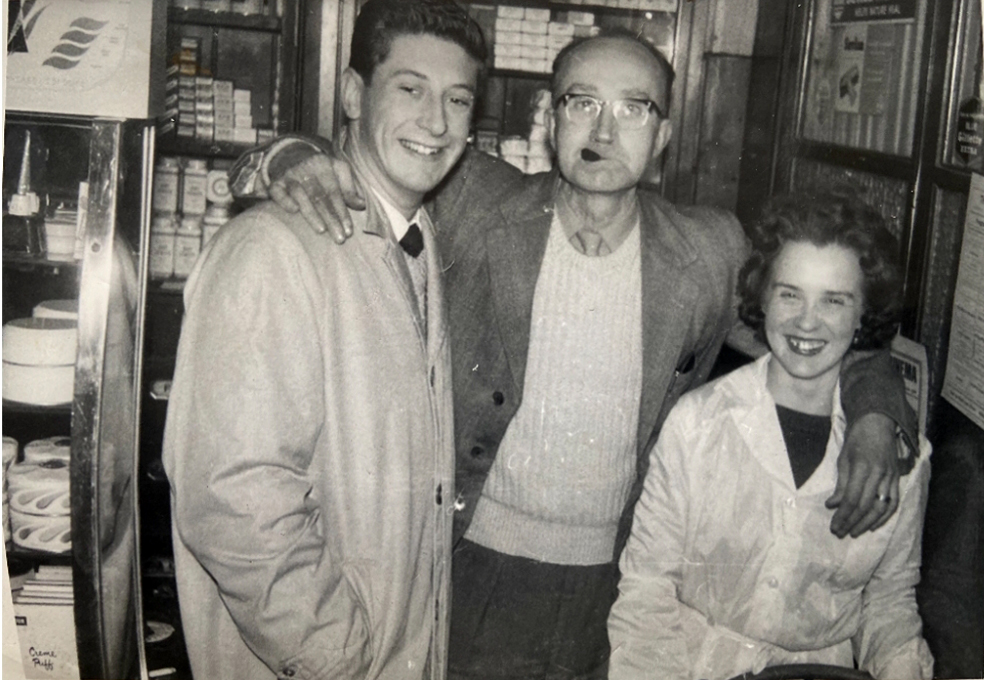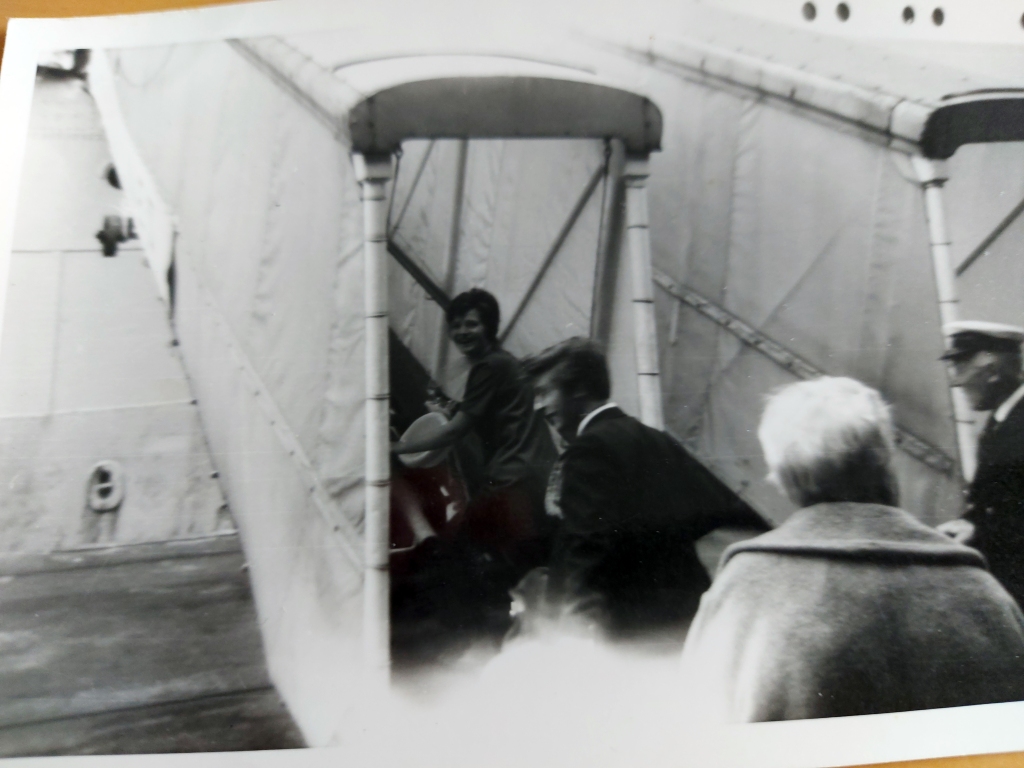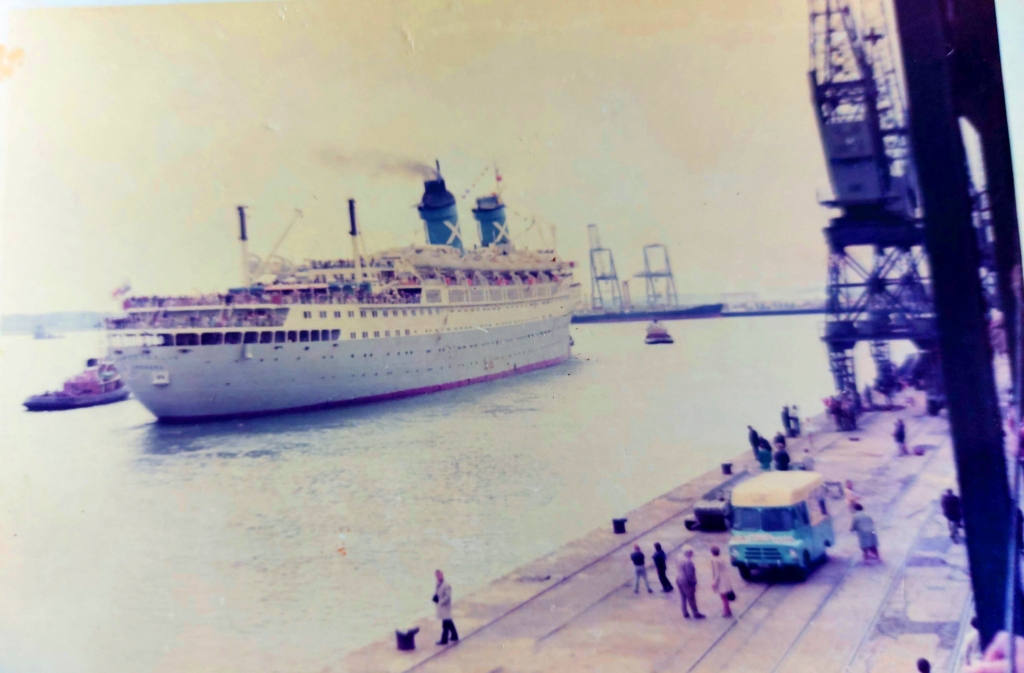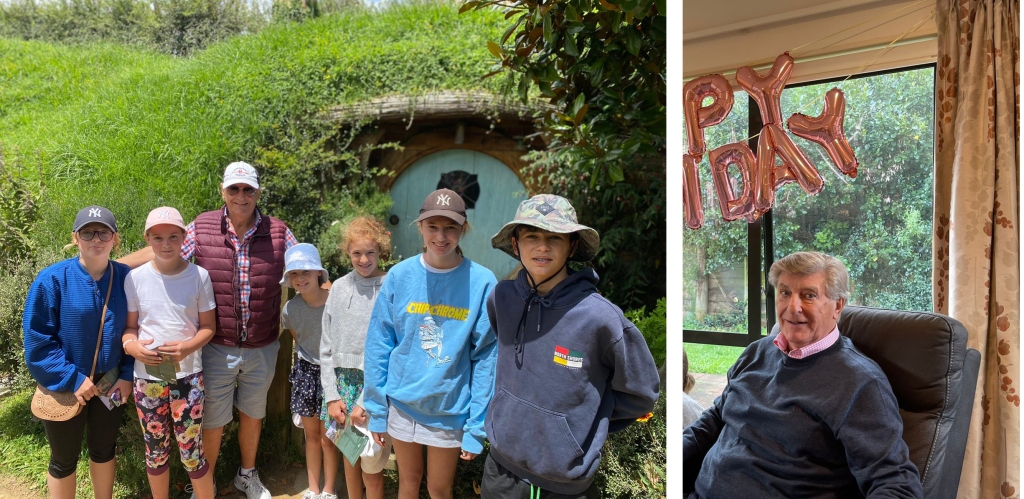“No day trip to Portrush would be complete without a ride on Rose, Jack, Billy or Benny, the donkeys on the beach owned by Jesse Edgar.”
The ponies and donkeys, on the East or West strand. A timeless, summer at the seaside activity!

The yards at the back of the Edgar’s house, down the terrace on Croc na mac, were their base for breakfast and for saddling up, after their overnight grazing at Parker Avenue field. Then they trooped off down the back lane to the Portrush beaches, with their daughter Fern and a giggle of youngsters earning summer job pocket money.
Its worth reading about this in the first blog, here’s the link Postcards from Portrush: Donkeys on the East Strand, if you haven’t read it already.
I remember Fern’s daughter Joanne as just a toddler, helping out as toddlers do. Joanne writes, ‘The beach donkeys and ponies were a big part of my life growing up. It was up early and over to my Granny and Papa’s house at 36 Croc-na-mac to pick up bridles and then over to the donkey field to get our charges. Vicki K remembers them, that ‘Jessie Edgar’s pony field was across from my granny’s in Parker Avenue’ – and then a swift canter with the donkeys and ponies back over the football pitch and in to Mrs McConaghy’s back garden, a few houses along, to give the animals a spruce up while they enjoyed their breakfast nosebags…’

Its a timeless activity! There’s a postcard of donkeys on the beach, 1920s, and there they are again, in glorious multicolour, in the 1980s!
After their breakfast would be the parade of a dozen donkeys and ponies, each with teir leader, out along the back lane, on their way to the beaches. And Sheila K: ‘Oh David, I remember the donkeys and ponies down the back lane and of always having a sugar lump or two to feed them if we knew we were going that way… or pulling up handfuls of grass from the verge if we had no other offerings.
‘And I remember too, two elderly spinster sisters, the Misses Cochrane, who lived in Rodney Street and who swore that Edgars’ animals’ manure was the reason that their roses and their rhubarb did so well. The smaller sister used to gather up any droppings left as the donkeys and ponies went to and from the beach with a short-handled coal shovel, put them in a galvanised bucket and head home as if she had just been panning for gold and had bagged a bucketful of nuggets!’
Out onto the lane and then, Joanne, ‘We split up to either the ‘Big Beach’ or the ‘Wee Beach’ – the East or West strands. I see Council adverts of the 1950s of licence for eight ponies or donkeys on the East strand and four on the West strand.
Joanne continues, ‘If it was the big beach then Shimo, Ken Bolton’s beautiful wee collie, was waiting to spend the day with us. We scaled the gate of the Bolton’s big Strandmore house, overlooking the East strand – it seemed an insurmountable height when I was small – to get buckets of water for them, while someone ran to the grocers to collect the carrot tops that the grocer kept for the donkeys, something they loved.’
‘If it was the wee beach, the West strand, then the tap outside the Teas and Ices cafe was much handier! And there was Maggie and Linda at the deckchairs to say hello to and the craic was good.’

Speaking of deck chairs: I don’t think I have mentioned Mrs. Frizelle anywhere elsewhere in my series, but here she is, one of the stalwarts of Portrush, promoting tourism, dancing lessons, choreographer at pantomime, deckchairs, Blue Pool diving displays, RNLI and British Legion, ….. – she herself was a ‘Great Institution’ of Portrush,

There’s images of the West strand above. Caroline D says, ‘I remember them well and loved them. I was always pea green watching the lucky ones who worked with them. ![]() ‘ – to be honest though I find only a few photos, no postcards, of the donkeys or ponies on the wee beach – do let me know, if you have pics of the animals, on either of the beaches!
‘ – to be honest though I find only a few photos, no postcards, of the donkeys or ponies on the wee beach – do let me know, if you have pics of the animals, on either of the beaches!
The animals processed along through the dry arch along the west strand promenade and then down the slope at te Teas n Ices down onto the beach. Katy Diamond writes, ‘I always remembered the West Strand donkeys run by Claire and Ann MacIntyre ![]() ‘, and I see pride of place in the August 1974 Belfast Telegraph seaside article below is Claire wth two donkeys – and there too is Ray Mason of Portrush Pottery, and Joy May of May’s Fashions, if you remember those shops.
‘, and I see pride of place in the August 1974 Belfast Telegraph seaside article below is Claire wth two donkeys – and there too is Ray Mason of Portrush Pottery, and Joy May of May’s Fashions, if you remember those shops.

Allison C: ‘This such a great read and photos! I remember going to the donkey field as a child when visiting my grandparents on Croc na Mac. Was there a donkey called Joey or Bobby at the east strand? Not sure what his name was, anyway he bit my sister’s finger when we were at CSSM one morning. I will never forget me trying to run home with her terrified that it would fall off. OK I was only about 8 and she was about 5 – imagination was my strong point! ![]() ‘
‘
Vicki K writes about her family, ‘I definitely think horsey-ness runs in family blood. Claire’s daughter Olivia had a pony and now I also have a horse, and Tracey has 2 donkeys.’ And Joanne’s family too, with a long love for the animals. The photo below – so historic! – just received from Joanne’s family album, image has never been seen before! ‘My grandfather’s riding school – where the Maxol station is now. He ran the riding school, and as well my great-grandfather also did beach donkeys.”

I guess that every kid visiting Portrush got a ride on the donkey, and I guess dozens of youngsters earned a little pocket money helping the Edgar’s with the animals.
Brian S: ‘I remember it well. I used to lead one of the donkeys – they would stand on your foot if you were not careful!’
The pay was not a path to riches though. Vicki K: ‘I used to love the stories that my aunt Claire and Ann told about working with the beach ponies, of a horse called Tara, and how little they got paid a shilling, an amount equivalent to like 50p a week!’

Left, photo courtesy Alice R, about 1930: ‘This is Albert Rohdich with his mum on the beach. Albert would have been 95 yesterday!’
and Right, donkey photo courtesy Pauline Rigby (Hunt), though not of Portrush: ‘I love the Portrush story, David! And the photo here is of Dana, her with lots of connections to Portrush, here with impressario Joe Longthorne during one of her summer seasons at Scarborough, before she went to America. And we still have donkeys on the beach in Scarborough, where I live now x’
Sheila K: I remember as a child wanting to work with the donkeys at the beach because you got to ride them there and back … until I realised that in-between, the work involved an awful lot of just standing about holding reins all day ![]() ‘.
‘.
George Davies: ”I used to lead the donkeys up and down to the marker flag all week for half-a-crown. Well, we did this more for the joy of riding the donkeys down to the beach and home again at night! I still remember riding a pony home and going past the gas works when a loud whistle scared the pony and he took off! The guy on a bike managed to stop it before the crossroads, going on to the Ballywillan road!’

Joanne continues, ‘I can’t remember much about our customers because, like all the leaders, all we cared about was our animals. I can remember Rosie, Clancy, Mitzi, Meg and Duchess the donkeys, and Tara, Candy, Goldie, Tanya, Sandy, Jet, Dusty and Rue the ponies. There were others, but those are the ones that stood out for me, and I could tell you about each of them to this day: Tara’s patience, Jet’s cheekiness, about the wonders of my first ever canter on Dusty, about how Rosie loved her ears scratched inside and how she refused to go to the wee beach because it wasn’t ‘her’ beach, about how Sandy was a nightmare to catch …… I could go on and on. To this day, many of the leaders I meet out and about, like the Una in the photo above, say it was the best job they ever had!!’

Mr. and Mrs. Edgar were the same generation as my mum and dad, getting married the same year and living in Croc na mac, ‘Honeymooners Row’. From the Edgar’s family album, the beautiful photo above. Joanne: ‘Oh this is one of my favourite photographs! Papa and Granny on Trixie and Jock, taken in 1948, the year they got married.’
Thirty or forty years later, years of donkeys and ponies, and I guess they were heading towards their retirement in the 1980s, and I guess also animal poo on the beach became considered un-cool and a health risk. I think donkey rides as an attraction at Portrush faded away in the early 1980s. The last newspaper photo of donkeys that I see, below, is of August 1981 (with some familiar names in the article), and Joanne reckons that her Papa had them until mid 1980s. If you have photos & info of the donkeys and ponies, that you’d like to share, please do send, to add to the social record.

So, donkeys on the Portrush beaches – really, a timeless activuity. The postcard, below left, is of donkeys on the East Strand, about 1910s. In the centre is, ‘Sixteen- year old Kathlen Tosh, of Coleraine, photographed in 1959.’ She is sitting very gracefully, but looks quite a lot older than 16 to me.
And right, from Belfast Telegraph, August 1978, ‘A day trip to Portrush would not be complete without a ride on Rose, Jack, Billy or Benny, the donkeys on the East Strand owned by Jesse Edgar. The two assistants are Louise Quinn and Linda Kelly, both from Portrush.’

What shines through to me is the care and affection for the donkeys and ponies. Sheila K reviews this and writes, ‘Oh David, even the ponies and donkeys get elevated to celebrity status via your memoirs and attention-grabbing writings!’ And that each one had their own character and personality – for example, Joanne: ‘The photo below is of Mum and a pony called Cheetah – Mum says that Cheetah insisted on having a snooze every day at lunchtime lol’.

There was the fantastic historic photograph of her family’s riding school, reflecting the several generations in her family, and Joanne finishes,
‘I’m proud to be my grandparents’ granddaughter and to have played a tiny part in the happy memories of so many people. Oh, and while none of the originals are around, there are still two donkeys in the family – I just can’t imagine a life without donks in it!!!’
==========================
With thanks to Joanne Gibson for the story and family photographs, Sheila Brown for the postcard images, the contributuions from Vicki K and everyone.
Heritage Newsletter, The Beach Donkeys and Ponies
Newspaper articles from https://www.britishnewspaperarchive.co.uk/
Postcards from Portrush’ series:
(I) the Story of Eglinton St.
(II) the West Strand & Harbour
(III) Harbour Tales
(IV) the Recreation Grounds, renewed
(V) Landsdowne, ‘Counties & The White House
(VI) Diving at the Blue Pool





























































